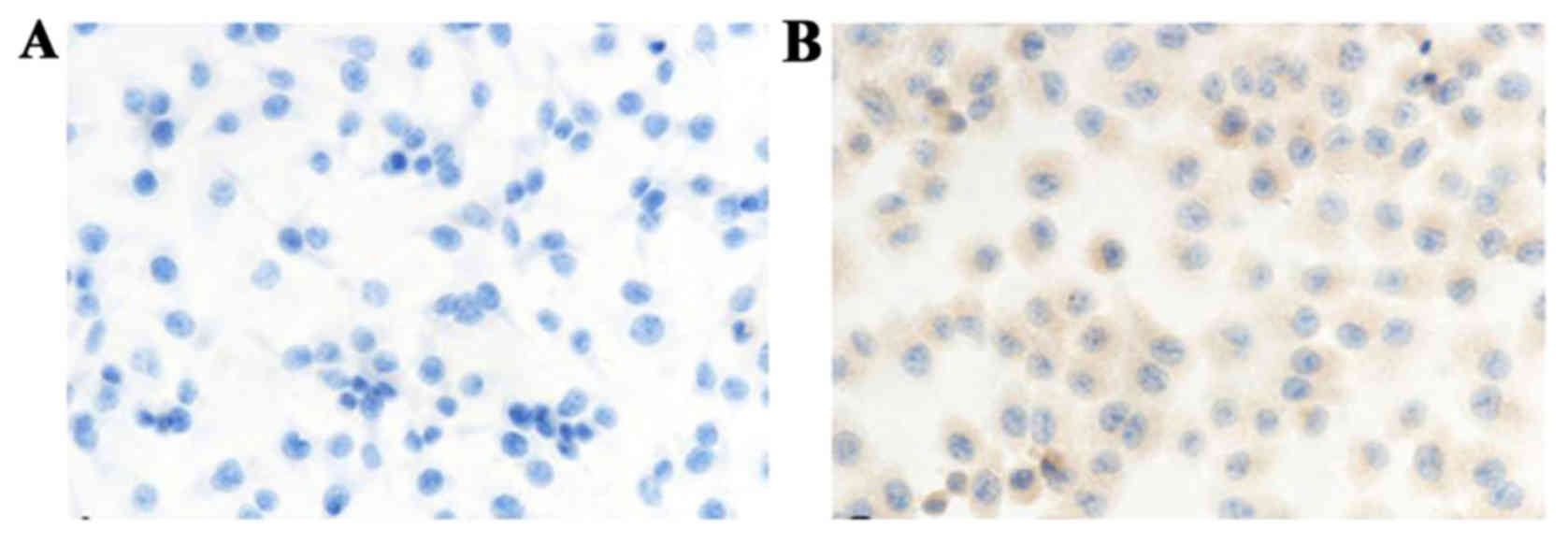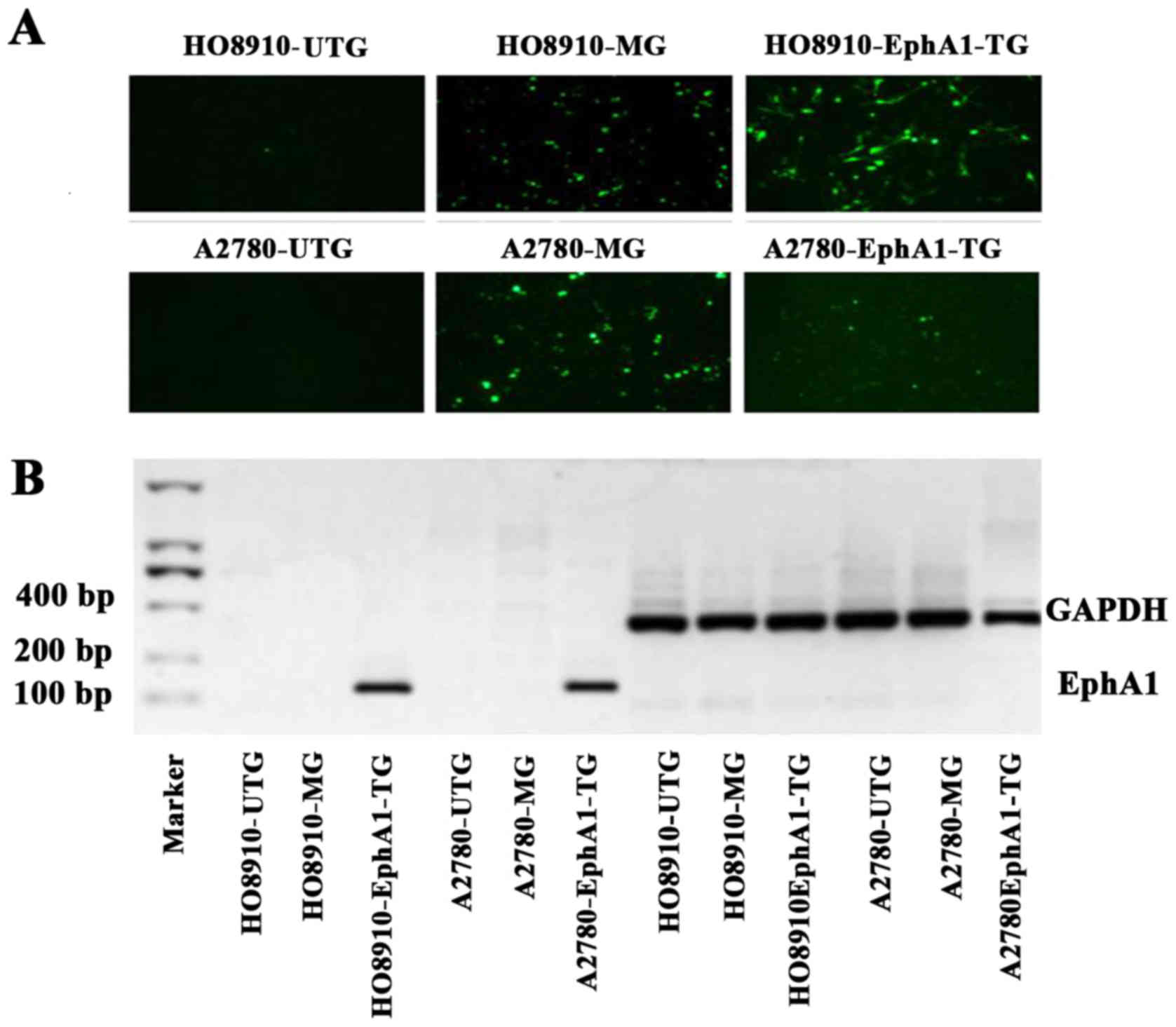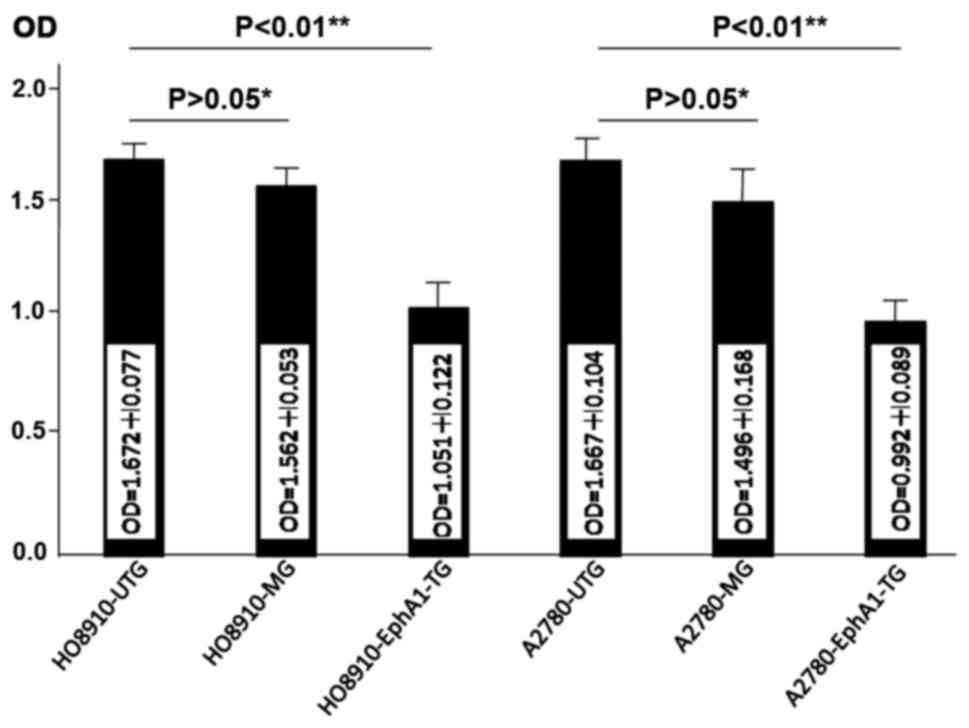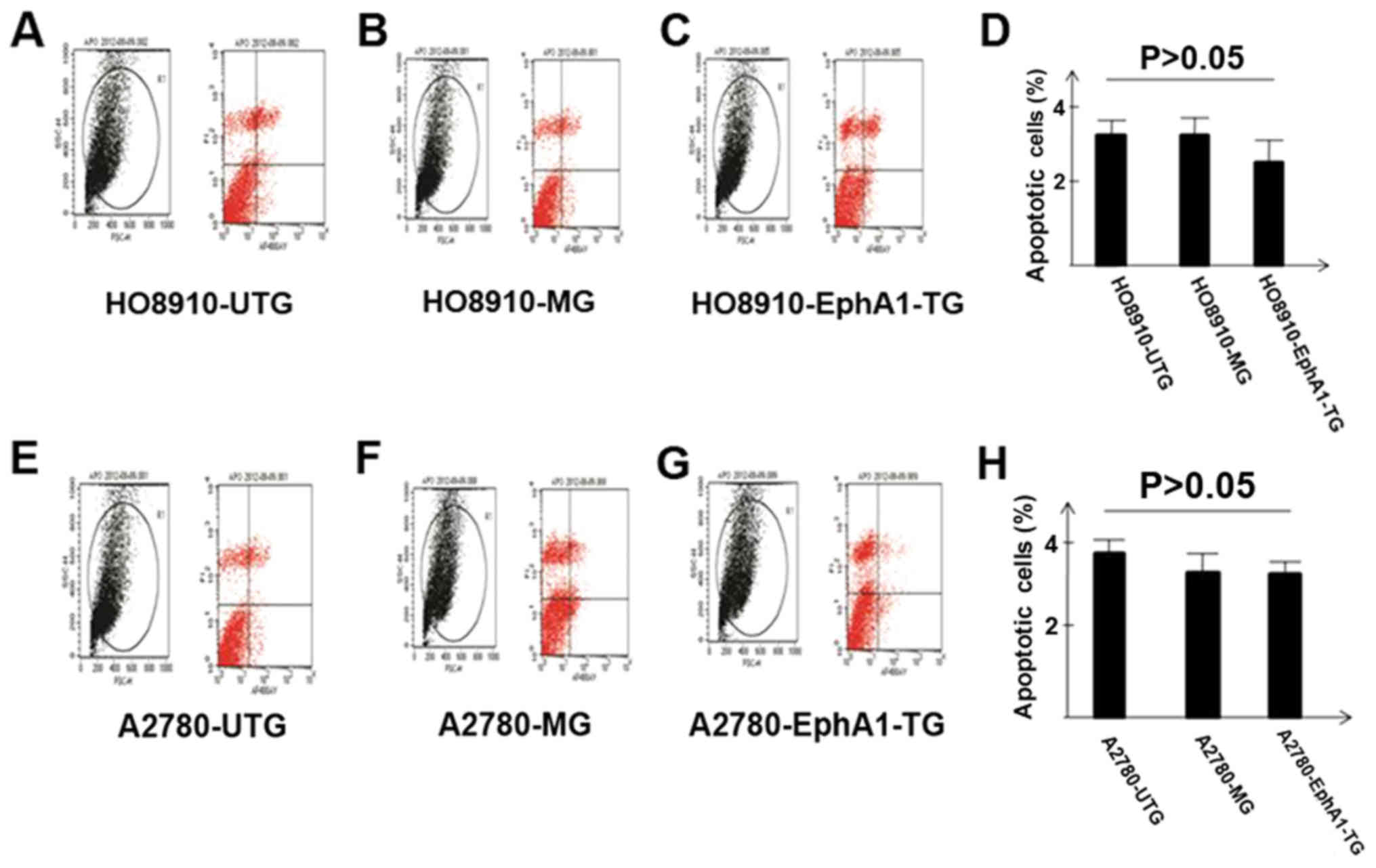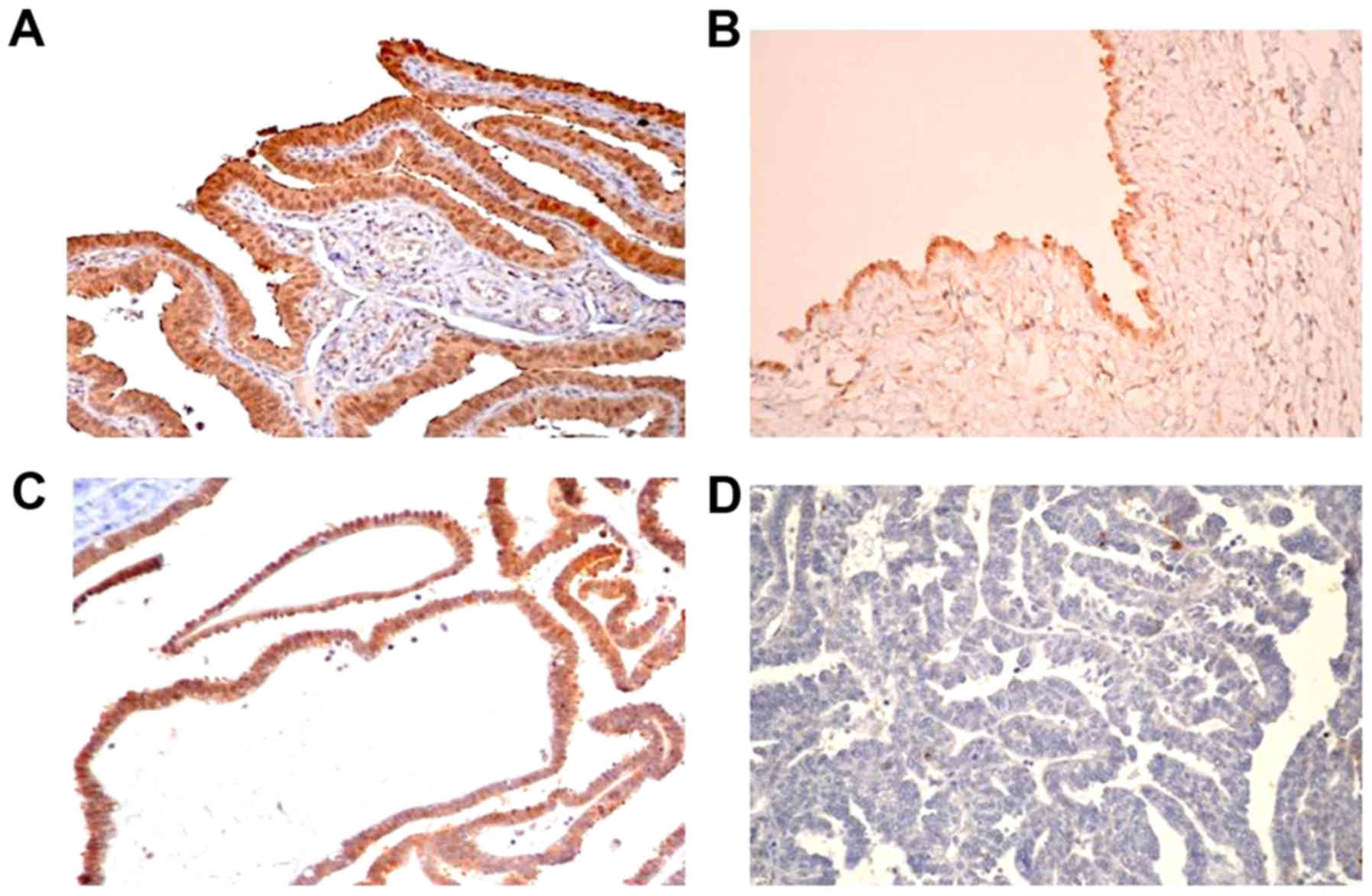|
1
|
Ciucci A, Zannoni GF, Buttarelli M,
Martinelli E, Mascilini F, Petrillo M, Ferrandina G, Scambia G and
Gallo D: Ovarian low and high grade serous carcinomas: Hidden
divergent features in the tumor microenvironment. Oncotarget.
7:68033–68043. 2016. View Article : Google Scholar : PubMed/NCBI
|
|
2
|
Siegel RL, Miller KD and Jemal A: Cancer
statistics, 2016. CA Cancer J Clin. 66:7–30. 2016. View Article : Google Scholar : PubMed/NCBI
|
|
3
|
Seebacher V, Reinthaller A, Koelbl H,
Concin N, Nehoda R and Polterauer S: The impact of the duration of
adjuvant chemotherapy on survival in patients with epithelial
ovarian cancer-a retrospective study. PLoS One. 12:e01692722017.
View Article : Google Scholar : PubMed/NCBI
|
|
4
|
Takekuma M, Wong KK and Coleman RL: A
long-term surviving patient with recurrent low-grade serous ovarian
carcinoma treated with the MEK1/2 inhibitor, selumetinib. Gynecol
Oncol Res Pract. 3:52016. View Article : Google Scholar : PubMed/NCBI
|
|
5
|
Unified nomenclature for Eph family
receptors and their ligands, the ephrins. Eph Nomenclature
Committee. Cell. 90:403–404. 1997. View Article : Google Scholar : PubMed/NCBI
|
|
6
|
Pasquale EB: Eph receptors and ephrins in
cancer: Bidirectional signalling and beyond. Nat Rev Cancer.
10:165–180. 2010. View
Article : Google Scholar : PubMed/NCBI
|
|
7
|
Drescher U: The Eph family in the
patterning of neural development. Curr Biol. 7:R799–R807. 1997.
View Article : Google Scholar : PubMed/NCBI
|
|
8
|
Mellitzer G, Xu Q and Wilkinson DG: Eph
receptors and ephrins restrict cell intermingling and
communication. Nature. 400:77–81. 1999. View Article : Google Scholar : PubMed/NCBI
|
|
9
|
Xu Q, Mellitzer G, Robinson V and
Wilkinson DG: In vivo cell sorting in complementary segmental
domains mediated by Eph receptors and ephrins. Nature. 399:267–271.
1999. View Article : Google Scholar : PubMed/NCBI
|
|
10
|
Holmberg J, Clarke DL and Frisén J:
Regulation of repulsion versus adhesion by different splice forms
of an Eph receptor. Nature. 408:203–206. 2000. View Article : Google Scholar : PubMed/NCBI
|
|
11
|
Cooke J, Moens C, Roth L, Durbin L, Shiomi
K, Brennan C, Kimmel C, Wilson S and Holder N: Eph signalling
functions downstream of Val to regulate cell sorting and boundary
formation in the caudal hindbrain. Development. 128:571–580.
2001.PubMed/NCBI
|
|
12
|
Herath NI and Boyd AW: The role of Eph
receptors and ephrin ligands in colorectal cancer. Int J Cancer.
126:2003–2011. 2010.PubMed/NCBI
|
|
13
|
Takano H, Nakamura T, Tsuchikawa T,
Kushibiki T, Hontani K, Inoko K, Takahashi M, Sato S, Abe H,
Takeuchi S, et al: Inhibition of Eph receptor A4 by
2,5-dimethylpyrrolyl benzoic acid suppresses human pancreatic
cancer growing orthotopically in nude mice. Oncotarget.
6:41063–41076. 2015. View Article : Google Scholar : PubMed/NCBI
|
|
14
|
Husa AM, Magić Ž, Larsson M, Fornander T
and Pérez-Tenorio G: EPH/ephrin profile and EPHB2 expression
predicts patient survival in breast cancer. Oncotarget.
7:21362–21380. 2016. View Article : Google Scholar : PubMed/NCBI
|
|
15
|
Mateo-Lozano S, Bazzocco S, Rodrigues P,
Mazzolini R, Andretta E, Dopeso H, Fernández Y, Del Llano E, Bilic
J, Suárez-López L, et al: Loss of the EPH receptor B6 contributes
to colorectal cancer metastasis. Sci Rep. 7:437022017. View Article : Google Scholar : PubMed/NCBI
|
|
16
|
Hirai H, Maru Y, Hagiwara K, Nishida J and
Takaku F: A novel putative tyrosine kinase receptor encoded by the
eph gene. Science. 238:1717–1720. 1987. View Article : Google Scholar : PubMed/NCBI
|
|
17
|
Duffy SL, Steiner KA, Tam PP and Boyd AW:
Expression analysis of the Epha1 receptor tyrosine kinase and its
high-affinity ligands Efna1 and Efna3 during early mouse
development. Gene Expr Patterns. 6:719–723. 2006. View Article : Google Scholar : PubMed/NCBI
|
|
18
|
Yamazaki T, Masuda J, Omori T, Usui R,
Akiyama H and Maru Y: EphA1 interacts with integrin-linked kinase
and regulates cell morphology and motility. J Cell Sci.
122:243–255. 2009. View Article : Google Scholar : PubMed/NCBI
|
|
19
|
Hafner C, Becker B, Landthaler M and Vogt
T: Expression profile of Eph receptors and ephrin ligands in human
skin and downregulation of EphA1 in nonmelanoma skin cancer. Mod
Pathol. 19:1369–1377. 2006. View Article : Google Scholar : PubMed/NCBI
|
|
20
|
Dong Y, Wang J, Sheng Z, Li G, Ma H, Wang
X, Zhang R, Lu G, Hu Q, Sugimura H and Zhou X: Downregulation of
EphA1 in colorectal carcinomas correlates with invasion and
metastasis. Mod Pathol. 22:151–160. 2009. View Article : Google Scholar : PubMed/NCBI
|
|
21
|
Wang J, Dong Y, Wang X, Ma H, Sheng Z, Li
G, Lu G, Sugimura H and Zhou X: Expression of EphA1 in gastric
carcinomas is associated with metastasis and survival. Oncol Rep.
24:1577–1584. 2010.PubMed/NCBI
|
|
22
|
Wang X, Liu Y, Cao G, Zhang X, Xu H, Xu H
and Wang J: Expression of the EphA1 protein is associated with
Fuhrman nuclear grade in clear cell renal cell carcinomas. Int J
Clin Exp Pathol. 8:6821–6827. 2015.PubMed/NCBI
|
|
23
|
Kurman RJ, Carcangiu ML, Herrington CS and
Young RH: WOH Classification of Tumours of Female Reproductive
Organs. International Agency for Research on Cancer; Lyon: 2014
|
|
24
|
Miyazaki K, Inokuchi M, Takagi Y, Kato K,
Kojima K and Sugihara K: EphA4 is a prognostic factor in gastric
cancer. BMC Clin Pathol. 13:192013. View Article : Google Scholar : PubMed/NCBI
|
|
25
|
Fox BP and Kandpal RP: Invasiveness of
breast carcinoma cells and transcript profile: Eph receptors and
ephrin ligands as molecular markers of potential diagnostic and
prognostic application. Biochem Biophys Res Commun. 318:882–892.
2004. View Article : Google Scholar : PubMed/NCBI
|
|
26
|
Nakagawa M, Inokuchi M, Takagi Y, Kato K,
Sugita H, Otsuki S, Kojima K, Uetake H and Sugihara K:
Erythropoietin-producing hepatocellular A1 is an independent
prognostic factor for gastric cancer. Ann Surg Oncol. 22:2329–2335.
2015. View Article : Google Scholar : PubMed/NCBI
|
|
27
|
Giaginis C, Tsoukalas N, Bournakis E,
Alexandrou P, Kavantzas N, Patsouris E and Theocharis S: Ephrin
(Eph) receptor A1, A4, A5 and A7 expression in human non-small cell
lung carcinoma: Associations with clinicopathological parameters,
tumor proliferative capacity and patients' survival. BMC Clin
Pathol. 14:82014. View Article : Google Scholar : PubMed/NCBI
|
|
28
|
Fox BP, Tabone CJ and Kandpal RP:
Potential clinical relevance of Eph receptors and ephrin ligands
expressed in prostate carcinoma cell lines. Biochem Biophys Res
Commun. 342:1263–1272. 2006. View Article : Google Scholar : PubMed/NCBI
|
|
29
|
Wang J, Ma J, Dong Y, Shen Z, Ma H, Wang
X, Shi S, Wu J, Lu G, Peng L and Zhoud X: High expression of EphA1
in esophageal squamous cell carcinoma is associated with lymph node
metastasis and advanced disease. APMIS. 121:30–37. 2013. View Article : Google Scholar : PubMed/NCBI
|
|
30
|
Peng L, Wang H, Dong Y, Ma J, Wen J, Wu J,
Wang X, Zhou X and Wang J: Increased expression of EphA1 protein in
prostate cancers correlates with high Gleason score. Int J Clin Exp
Pathol. 6:1854–1860. 2013.PubMed/NCBI
|
|
31
|
Wong YL, Dali AZ, Mohamed Rose I, Jamal R
and Mokhtar NM: Potential molecular signatures in epithelial
ovarian cancer by genome wide expression profiling. Asia Pac J Clin
Oncol. 12:e259–e268. 2016. View Article : Google Scholar : PubMed/NCBI
|
|
32
|
Herath NI, Spanevello MD, Sabesan S,
Newton T, Cummings M, Duffy S, Lincoln D, Boyle G, Parsons PG and
Boyd AW: Over-expression of Eph and ephrin genes in advanced
ovarian cancer: Ephrin gene expression correlates with shortened
survival. BMC cancer. 6:1442006. View Article : Google Scholar : PubMed/NCBI
|
|
33
|
Mignogna C, Staropoli N, Botta C, De Marco
C, Rizzuto A, Morelli M, Di Cello A, Franco R, Camastra C, Presta
I, et al: Aurora kinase a expression predicts platinum-resistance
and adverse outcome in high-grade serous ovarian carcinoma
patients. J Ovarian Res. 9:312016. View Article : Google Scholar : PubMed/NCBI
|
|
34
|
Gu Y, Li F, Qian N, Chen X, Wang H and
Wang J: Expression of EphB6 in ovarian serous carcinoma is
associated with grade, TNM stage and survival. J Clin Pathol.
69:448–453. 2016. View Article : Google Scholar : PubMed/NCBI
|



